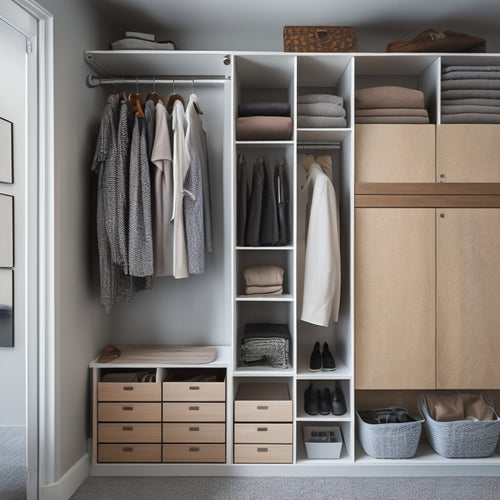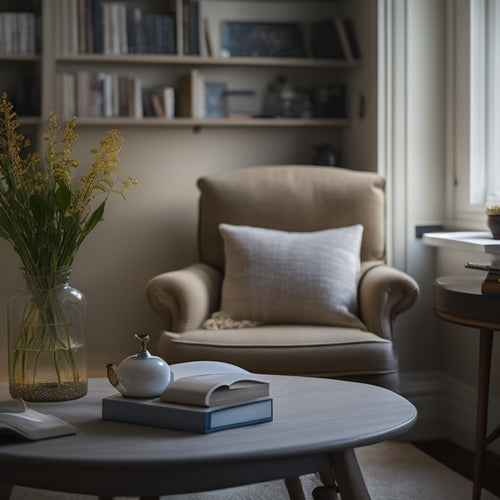
Unlock Learning With Creative Sensory Bins
Share
I'm about to transform the way my students learn by swapping out traditional textbooks for imaginative sensory bins that spark curiosity, enhance involvement, and make intricate concepts feel like fun escapades. By integrating sensory bin therapy, I'm boosting learning engagement and promoting hands-on experiences that nurture creativity and critical thinking. I'll customize sensory bins to particular learning goals, blending textures and objects to ignite interest. Now, I'm thrilled to explore how to overcome space challenges and maximize student involvement, and I'm keen to discover the numerous ways creative sensory bins can open up learning in my classroom.
Key Takeaways
• Customized sensory bins tailored to specific learning objectives enhance engagement and foster creativity in students.
• Combining various textures and objects in sensory bins sparks curiosity and encourages hands-on learning experiences.
• Compact and portable sensory bin designs overcome space challenges, making them accessible for any learning environment.
• Aligning sensory bin themes with lesson plans creates immersive experiences that promote interactive learning and critical thinking.
• By incorporating unexpected materials, sensory bins can be designed to cater to diverse learning needs and abilities.
Benefits of Sensory Bin Therapy
As I set up my therapy sessions, I've discovered that incorporating sensory bins reveals a world of benefits for my students, from calming anxious minds to sparking imaginative play. One of the most significant sensory bin benefits is the boost in learning engagement.
Interactive activities within these bins encourage students to explore, experiment, and learn through hands-on experiences. I've seen students who were once hesitant to participate now immerse themselves into activities with excitement and curiosity.
The sensory bin benefits extend beyond the therapy room, too - students develop essential skills like problem-solving, critical thinking, and creativity, all of which contribute to their overall student success. By incorporating sensory bins into my practice, I've witnessed a significant shift towards more engaged, motivated, and successful learners.
Customizing Sensory Bins for Learning
I love tailoring my sensory bins to specific learning objectives. This allows me to create a customized experience that caters to my students' unique needs and sparks their curiosity.
By choosing a theme that aligns with our lesson, I can create an immersive experience that's both fun and educational. For instance, if we're learning about farm animals, I'll create a sensory bin filled with pom poms, stones, and farm animal characters.
This customization enables me to craft interactive learning experiences that promote engagement and excitement. By doing so, I can help my students develop a deeper understanding of the material while having a blast.
It's amazing to see how something as simple as a sensory bin can open up a world of learning possibilities!
Effective Sensory Bin Materials
When it comes to creating an immersive sensory experience, the right materials can make all the difference, and I've found that combining unexpected textures and objects is key to sparking curiosity and engagement. To get started, I like to explore different sensory bin filler options, such as beads, rice, or sand, and pair them with themed objects like mini figurines, pom poms, or other decorative items.
| Theme | Sensory Bin Filler | Objects |
|---|---|---|
| Farm | Pom poms, stones | Farm animal characters |
| Christmas | Cotton balls | Mini trees, penguins, reindeer |
| Sports | Small beads | Mini sports equipment ornaments |
| Valentine's Day | Rice | Hearts of different sizes and colors |
| General | Sand | Various mini ornaments |
Overcoming Space Challenges
One major hurdle that often stands in the way of incorporating sensory bins into therapy sessions is finding space to store them. I've been there too! But don't let limited storage space hold you back.
Here are some space-saving solutions to help you overcome this challenge:
-
Opt for compact designs: Look for smaller sensory bins or containers that can fit snugly on shelves or in closets.
-
Choose portable options: Select sensory bins that are lightweight and easy to transport, making them perfect for on-the-go therapy sessions.
-
Utilize vertical storage: Maximize your storage space by using stackable containers or shelves to keep your sensory bins organized and within reach.
Maximizing Student Engagement
By incorporating sensory bins into therapy sessions, you can create an immersive experience that sparks curiosity and enthusiasm in students.
I've seen firsthand how these interactive activities can ignite a love for learning and encourage active student participation.
To maximize engagement, I recommend tailoring your sensory bins to specific themes and learning objectives. This ensures that students are invested in the activity and motivated to explore.
By incorporating tangible items that align with their interests, you can create an unforgettable experience that fosters a deeper connection with the material.
Frequently Asked Questions
How Often Should I Rotate Sensory Bin Themes to Maintain Student Interest?
In my therapy sessions, I rotate sensory bin themes every 4-6 weeks to maintain student interest; for instance, switching from a farm-themed bin to a sports-themed one keeps students engaged and excited about learning.
Can I Adapt Sensory Bins for Students With Physical Disabilities or Limitations?
"I adapt sensory bins for students with physical disabilities by incorporating inclusive strategies, such as using larger, lighter materials or adaptive tools, and modifying activities to meet individual needs, ensuring every student can engage and learn."
Are Sensory Bins Suitable for Group Therapy Sessions or One-On-One Only?
Like a conductor leading an orchestra, I seamlessly weave sensory bins into group therapy sessions, adapting activities to engage multiple students in a classroom setting, just as I would in one-on-one sessions, with tailored prompts and creative freedom.
How Do I Ensure Sensory Bins Are Clean and Hygienic for Students?
'I prioritize sanitization practices by washing hands before prep, using gentle cleaners, and storing bins in airtight containers. I also choose safe, non-toxic ingredients and implement safety measures like supervision to guarantee a hygienic experience for my students.'
Can I Use Digital Sensory Bins or Virtual Experiences Instead of Physical Ones?
I totally get why you'd wonder if digital sensory bins or virtual experiences can replace physical ones - and honestly, I think they can be a great alternative, offering benefits like increased accessibility and adaptability for students who need it!
Related Posts
-

7 Best Compact Closet Storage Ideas for Tiny Homes
You're looking for compact closet storage ideas to maximize your tiny home's space. Start by doubling your hanging sp...
-

Simplify Your Space: Downsizing Tips for Seniors
You're ready to simplify your space and create a more peaceful living environment. Start by gathering boxes, bins, an...

